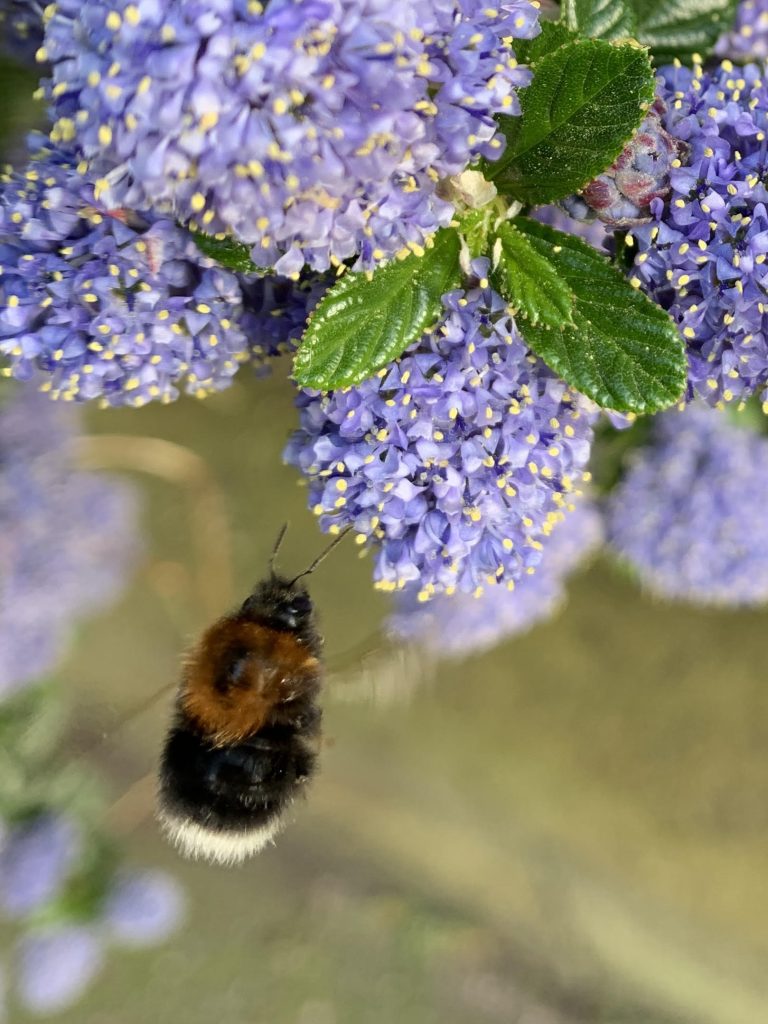Lunchtime Learning: Biodiversity

As part of our adaptation themed Lunchtime Learning series, this session spotlighted the power of community-led action to restore biodiversity and protect nature. We were joined by Sue Morris from the Loch Lomond & The Trossachs Countryside Trust and Frank and Lee from On the Verge, who shared inspiring stories of transformation, from landscape scale rewilding to wildflower planting on street corners.
Key Speakers and Insights
Loch Lomond & The Trossachs Countryside Trust Sue Morris took us through a journey of biodiversity recovery across Loch Lomond and The Trossachs National Park. Her message was clear: you don’t need to be an expert to make a difference, just interested and willing to get involved.
She introduced two major projects:
- The Great Trossachs Forest: A 200-year vision bringing together Forestry and Land Scotland, RSPB Scotland, and Woodland Trust Scotland to reconnect fragmented native woodlands. It’s already making an impact, with the return of species like the pearl-bordered fritillary butterfly.
- Wild Strathfillan: A bottom-up, community-first approach to habitat restoration involving small landowners and local residents. This project emphasizes people’s role in long-term nature recovery, blending livelihoods, culture, and conservation.
“We need to support everybody to re-engage with nature. Each step, from a short walk to growing a tree, helps address the biodiversity crisis.”
Sue highlighted the Countryside Trust’s commitment to what she calls nature literacy: helping people connect with and understand the natural world. Their programs include;
- Weekly health walks
- Themed nature challenges (“Find fungi!”)
- Citizen science activities
- Tree nurseries and seed collection with schools and communities
One favourite challenge: “Find the colours of the rainbow in nature.” The response was a flood of beautiful photos and new awareness of biodiversity in everyday places.
On the Verge Lee and Frank from On the Verge shared how their grassroots group began transforming grassy verges into wildflower habitats back in 2010 and how their approach has evolved.
Early work focused on schools, using criminal justice teams to prep land and children to sow seeds. But a pivotal moment came during the pandemic, when lockdown revealed previously unseen wildflowers thriving in uncut areas.
They’ve since adopted the cut-and-collect method removing grass clippings to reduce soil fertility and allow wildflowers to thrive. When combined with yellow rattle, a grass-suppressing native plant, they’ve seen stunning results in areas like Newton Park in Dunblane.
The team also lobbied Stirling Council, helping develop a pollinator strategy now shaping greenspace management citywide.
Inspired to act? Here’s how you can start making space for nature:
-
Join the No Mow May movement: Let your lawn grow wild through May (and beyond) to give pollinators the early-season food they need. Resist the urge to tidy! Daisies, dandelions, and clover are lifelines for bees.
-
Plant native wildflowers: Whether it’s a windowsill box, school garden, or community patch, planting native perennials helps support pollinators year round.
-
Support or start a local project: Groups like On the Verge can guide you in transforming grassy areas into thriving habitats.
-
Take part in citizen science: Projects like the UK Pollinator Monitoring Scheme (PoMS) or iNaturalist help build national biodiversity data—your observations contribute to real conservation work.
-
Get young people involved: Schools and youth groups can join in through wildflower planting, seed collecting, or nature-based art and science projects.
From forest-scale rewilding to letting a patch of lawn grow, every action counts. Across Scotland, people are helping biodiversity recover one wild corner at a time. Whether you’re sowing, spotting, or simply slowing down to notice, there’s a place for you in the movement.
